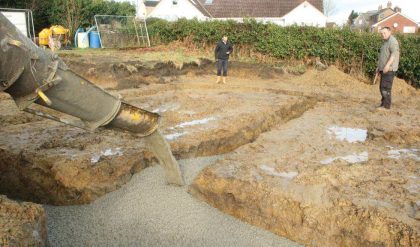As most of us know, the modern homes of today are quite literally worlds apart from those homes that were build a hundred years ago, and of course the reason for this all boils down to modern day residential engineering. A hundred or so years ago, virtually all residential properties had floor plans which were almost identical to each other. The overwhelming majority of homes were rectangular in shape, and most of them were constructed with a combination of sawmill timber and block and brick masonry.
Practically all interior rooms like bedrooms; living rooms and kitchens were built square, with most being around twelve feet wide. Ceilings were at one point relatively high, but not excessively so, and soon builders started favouring even lower ceilings in an attempt to keep heating and cooling costs down. Back in those early days, builders fitted windows in for practical reasons. Windows were only used in order to allow natural light into a dwelling, and to provide a means for adequate ventilation.
Residential Engineering and The Modern Homes of Today
Residential engineering has without a doubt changed the way we think about residential properties. For example, many modern homes now incorporate a wide range of materials, including lumber; aluminium; cement blocks; bricks; stainless steel and glass. Many people these days are no longer interested in buying traditional square or rectangular home. Instead they want futuristic fantasy designs which have been made possible through modern residential engineering capabilities.

People want extreme architecture; a design which they feel will represent their individuality. They want high ceilings above large airy rooms; they want expansive glass windows that provide stunning panoramic views, and many want split level floors; mezzanine decks and glittering spiral staircases.
Designing and Constructing A Modern-Day Home
Because people are making increasingly challenging demands regard their home designs, the need for residential engineering professionals has never been greater than it is today. The more complex a particular design is, the more room there is for error, and with the rising cost of labour and building materials, errors can result in significant financial losses. While engineers are expected to do whatever they can in order to keep homeowners happy, they are also under a considerable amount of pressure to design buildings that meet government building and safety regulations. In short, employing the services of a reputable engineering firm that has plenty of residential engineering experience is the very best method of ensuring that you don’t run into any problems.
Using a good engineering firm does of course cost money, but it can also save you a considerable amount of money and heartache. A good firm will see to it that your home is built in the most effective and most cost-efficient manner possible. They will also see to it that you get the sort of quality you want and that the final end product is exactly as you envisioned before construction got underway.
Roofing – More Than Just A Cover
While many people view a roof as being nothing more than a means to protect against the elements of nature, there is actually far more to it than that. When properly installed, the entire foundation of your home will have protection, but if the roof has been constructed with an incorrect slope or poor-quality materials, it could severely damage your home. Residential engineering specialists on the other hand they will consider the pitch of the roof, along with the hips, gables and dormers. They understand the concrete footings that are supporting the foundation and can ensure that the load points of the roof and the end reactions of the beams are offering the proper amount of stability.
Of course, successful engineering for the home begins long before the roof is placed on the home. It begins with the initial planning stage. This is doing the research on a properly and creating a plan that estimates materials and any special adjustments to the design to ensure that the project is done right the first time.
It takes having the right permits and ensuring that the area is rezoned if needed.
The process can then be carried over to the surveying stage of the project. This includes mapping the elevation; borders and boundaries, and surveying the area, making a note of any potential problems that may arise. This includes storm water damage that could become a problem if there are heavy rains.
Planning For Add-On Features
Add on elements such as decks, for example, will also need proper residential engineering strategies in place. As an external structure, it is important to ensure that any deck is safe enough for the weight of your guests, without causing any strain to the existing foundation and walls.
Getting It Right the First Time
When a home is properly designed and engineered in accordance with modern residential engineering protocol, it will be safer and last for a longer period of time. It will also be less likely that you will encounter fines and penalties associated with the project. Anytime you’re planning on building a new home or adding to an existing structure, it is important to work closely with an engineer to ensure the project is done right the first time.


